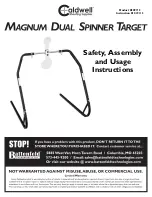
6
I M P O R T A N T I N F O R M A T I O N
KITE CARE
Due to the often extreme nature of kiteboarding, a thorough approach should be taken when caring for your kite and all its as-
sociated rigging, as well as your protective gear.
PREPARING FOR YOUR SESSION
• Thoroughly check your protective equipment (helmet, etc.) to make sure it is in working order and in good condition.
• A frequent inspection of the kite and the control system should be made in order to identify punctures, tears, or abrasions
in the canopy, struts, or security systems. It is also necessary to check the fly lines for wear and for unwanted knots, which
may reduce the strength of the fly lines.
• Do not rig on asphalt, cement, gravel, or other abrasive surfaces; doing so may damage your equipment. It is best to rig on
sand or grass. Damage done to your equipment by rigging on abrasive surfaces will not be covered under warranty.
• Do not rig among sharp objects that could tear the canopy or puncture the struts and leading edge bladder.
• Take care not to expose your flying lines to sharp objects that may wear through them.
• While setting up, secure your kite with sand or sand bags. Do not secure your kite with rocks or other sharp or abrasive
objects that may damage your kite.
BETWEEN SESSIONS
• Never leave an inflated kite unattended on the beach for a long period of time. Winds may shift or change and the kite may
become unsecured and fly off.
• Do not leave an inflated kite (secured or not), directly exposed to the wind for any length of time. This allows the trailing edge
to flutter excessively, which can damage the kite or tangle the bridles/control lines. If you must leave the kite exposed to the
wind on the beach, place sufficient amounts of sand between each strut and near the trailing edge to minimize or stop the
fluttering
• Do not leave your kite exposed to sunlight for long periods of time. Between sessions, choose a shaded area to secure your
kite. When not in use, stow away.
PROPER STORAGE
• It is recommended to wash your kite with fresh water and dry thoroughly before rolling and storing.
• Do not roll up kite when wet.
• Clear the kite of sand or other foreign objects before stowing.
• Once it is clean and dry, stow your kite in the supplied bag in a clean, dry, cool place.
• Do not place heavy objects on the bag containing the kite.
• Do not leave your kite inflated in your car or car rack box; exposing the kite to extreme temperatures while inflated may
damage the internal bladders.
• Wash your control system with fresh water from time to time by placing the entire control system (with lines wound onto the
bar) into a bucket of fresh water and let it sit for 5 minutes. Allow to dry thoroughly before storing in a dry location.
• Once it is clean and dry, stow your control bar in the supplied bag in a clean, dry, cool place.
CK07Control_System_Manual.indd 6
4/18/06 4:20:54 PM











































